
Overview
The Mining, Quarrying, and Oil and Gas Extraction Industry is a vital part of the global economy, providing the raw materials that are essential to many industries. Mining is the process of extracting minerals from the ground. This can be done through surface mining, underground mining, or solution mining. Surface mining is the most common type of mining and involves removing the top layer of soil and rock to reach the mineral deposit. Underground mining involves digging shafts and tunnels to reach mineral deposits. Solution mining involves dissolving the mineral deposit with a liquid solution and then pumping the liquid to the surface, where the mineral is extracted. Quarrying is the process of extracting rocks and stones from the ground. This is done through surface quarrying, underground quarrying, or dredging. Surface quarrying is the most common type of quarrying and involves removing the top layer of soil and rock to reach the rock deposit. Underground quarrying involves digging shafts and tunnels to reach the rock deposit. Dredging is used to extract rocks and stones from the bottom of rivers, lakes, and oceans. Oil and gas extraction is the process of extracting oil and natural gas from the ground. This is done through drilling wells into the ground and then pumping the oil and gas to the surface. The Mining, Quarrying, and Oil and Gas Extraction Industry is a major employer in many countries around the world. It also plays a vital role in the global economy by providing the raw materials that are essential to many industries, such as construction, manufacturing, and energy.
Depending on specific features and functions, GAO Tek’s radiation meters are sometimes referred to as Dosimeter, Radiometer, Radiation detector, Survey meter, Count rate meter, Monitor, Counter, Radiation detector, Radiometer, Dosimeter, Survey meter, Monitor Counter, Dose rate monitor, Ionization chamber, Proportional counter, Semiconductor detector, Scintillation counter, Geiger counter, Geiger-Müller counter, GM counter, Neutron detector, Alpha detector, Beta detector, Gamma detector, X-ray detector, Rad monitor, Rem meter, Roentgen meter, Curie meter, Becquerel meter, Gray meter, Sievert meter, Dose, equivalent meter, Personal dosimeter, Whole, body counter, Area monitor, Portal monitor, Hand held monitor, Vehicle monitor, Airborne monitor, Water monitor, Soil monitor, Food monitor, Air sampler.
Gao Tek’s radiation meters have the following applications in mining, quarrying, and oil and gas extraction industry:
- Radiation Safety: GAO ensuring the safety of workers is paramount. Radiation meters are used to monitor and measure ionizing radiation levels to protect workers from potential exposure to harmful radiation, such as radon gas or gamma radiation, in underground mines or drilling operations.
- Exploration: GAO Tek’s radiation meters are utilized in exploration activities to detect and measure natural radioactive materials like uranium, thorium, and their decay products. These measurements help identify potential mineral deposits or oil and gas reserves.
- Quality Control: In our mineral processing and refining, radiation meters can be used to assess the quality and composition of ore or oil and gas products. For instance, neutron activation analysis can be employed to determine the elemental composition of materials.
- Environmental Monitoring: GAO’s radiation meters are used to monitor environmental radiation levels near mining, quarrying, and drilling sites. This helps ensure that radiation emissions are within permissible limits and that there are no harmful effects on the environment or nearby communities.
- Health and Safety Compliance: Ours regulatory agencies often require mining and oil and gas companies to monitor and report radiation levels to ensure compliance with safety regulations. Radiation meters are essential tools for meeting these compliance requirements.
- Well Logging: In our oil and gas industry, radiation logging tools are employed in well logging operations to provide information about the geological formations and fluid content encountered during drilling. These measurements assist in reservoir characterization and production optimization.
- Tracer Studies: GAO’s radioactive tracers can be introduced into fluids or materials to track their flow and distribution within a reservoir or mining operation. Radiation meters are used to detect and quantify these tracers, aiding in the evaluation of fluid dynamics and resource recovery.
- Waste Management: GAO Tek’s radiation meters are used to assess and classify radioactive waste generated in mining, quarrying, and oil and gas activities. Proper disposal and management of radioactive waste are essential for minimizing environmental impact.
- Radiation Shielding Design: When we designing facilities for handling radioactive materials or equipment used in these industries, radiation meters are employed to measure radiation levels and ensure adequate shielding to protect workers and the environment.
- Nuclear Gauges: In our construction materials testing for infrastructure projects like roads and bridges, radiation meters are used in nuclear gauges to measure the density and moisture content of materials like soil, asphalt, and concrete. This helps ensure the quality and durability of construction materials.
- Oil Well Logging: Radiation meters are used in well logging tools that are lowered into oil wells to provide data on rock formations, porosity, and fluid content. This information is critical for reservoir evaluation, drilling strategy, and production forecasting.
- Coal Mining: In our coal mining, radiation meters can be used to monitor coal thickness, assess coal quality, and detect the presence of unwanted materials like rock or shale. This data aids in optimizing coal extraction processes.
- Mineral Identification: Some radiation meters can be equipped with gamma-ray spectrometry capabilities, allowing them to identify specific minerals based on their unique gamma-ray signatures. This is valuable for mineral exploration and geological studies for us.
- Emergency Response: Our radiation meters are essential tools in emergency response situations involving hazardous materials, such as radioactive spills or accidents at mining or drilling sites. They help assess the extent of contamination and guide cleanup efforts.
- Security Screening: GAO’s radiation meters are used at mining and oil and gas facilities to screen personnel and vehicles for potential radiation sources. This is crucial for security and preventing unauthorized access to sensitive areas.
- Reservoir Monitoring: In our oil and gas reservoirs, radiation meters can be employed to monitor changes in reservoir properties over time, providing valuable data for reservoir management and enhanced oil recovery techniques.
- Oil Refining: Ours radiation meters can be used in oil refineries to monitor and control processes, ensuring the efficient separation of oil and gas products while minimizing radiation exposure to workers.
- Hydrocarbon Exploration: GAO’s radiation meters are used in some geophysical methods, like gamma-ray spectrometry, to identify and map subsurface hydrocarbon deposits, assisting in the exploration for oil and natural gas resources.
More information on radiation meters and their applications in other industries can be found on this page.
Environmental Radiation Meters.
This category page lists related products.
Environmental Test Instruments.
GAO Tek’s targeted markets are North America, particularly the U.S., Canada, Mexico, and Europe. Hence, in addition to English, this website gaotek.com is offered in other major languages of North America and Europe such as Spanish, French, German, Italian, Polish, Ukrainian, Romanian, Russian, Dutch, Turkish, Greek, Hungarian, Swedish, Czech, Portuguese, Serbian, Bulgarian, Croatian, Danish, Finnish, Norwegian, Slovak, Catalan, Lithuanian, Bosnian, Galician, Slovene, Latvian, Estonian, Welsh, Icelandic, and Irish.
Complying with Mining, Quarrying, And Oil and Gas Extraction Industry Standards
GAO Tek’s radiation meters comply or help our customers comply with the mining, quarrying, and oil and gas extraction Industry standards such as:
- American National Standards Institute (ANSI)
- International Organization for Standardization (ISO)
- American Petroleum Institute (API)
- Society of Petroleum Engineers (SPE)
- Australian Radiation Protection and Nuclear Safety Agency (ARPANSA)
- Canadian Nuclear Safety Commission (CNSC)
- European Commission (EC)
- Arising from Exposure to Ionizing Radiation
- International Atomic Energy Agency (IAEA) Nuclear Regulatory Commission (NRC)
- Mine Safety and Health Administration (MSHA)
- Administration (OSHA)
Complying with Government Regulations
GAO Tek’s radiation meters comply or help our customers comply with the U.S. government regulations such as
- Nuclear Regulatory Commission (NRC)
- 10 CFR Part 20 – Standards for Protection Against Radiation
- 10 CFR Part 40 – Domestic Licensing of Source Material
- 10 CFR Part 50 – Domestic Licensing of Production and Utilization Facilities
- 40 CFR Part 61 – National Emission Standards for Hazardous Air Pollutants
- National Emission Standards for Hazardous Air Pollutants from the Extraction of Nonmetallic Minerals Processing Plants (NESHAP)
- National Emission Standards for Hazardous Air Pollutants from Petroleum Refineries
- National Emission Standards for Hazardous Air Pollutants for Oil and Natural Gas Production Facilities 40 CFR Part 141
- National Primary Drinking Water Regulations 40 CFR Part 143
- Nuclear Regulatory Commission (NRC): 10 Nuclear Regulatory Commission (NRC): CFR 20.1501
- Nuclear Regulatory Commission (NRC): 10 CFR 34.43
- Environmental Protection Agency (EPA): 40 CFR 61.255
- Environmental Protection Agency (EPA): 40 CFR 61.256
- Environmental Protection Agency (EPA): 40 CFR 61.257
- Environmental Protection Agency EPA: 40 CFR 61.258
GAO Tek’s radiation meters comply or help our customers comply with the Canadian government regulations such as
- Canada Occupational Health and Safety Regulations (COHSR)
- Canadian Nuclear Safety Commission (CNSC) Regulations
- Canadian Environmental Protection Act, 1999 (CEPA, 1999)
- Transportation of Dangerous Goods Act, 1992 (TDG Act)
GAO Tek’s radiation meters comply or help our customers comply with the Mexican government regulations such as
- NOM-001-SEMARNAT-1993:
- NOM-033-SEMARNAT-1994:
- NOM-034-SEMARNAT-1994:
- NOM-089-SEMARNAT-2003:
- Secretaría de Medio Ambiente y Recursos Naturales (SEMARNAT)
GAO Tek’s radiation meters comply or help our customers comply with the European government regulations such as
- Council Directive 2013/59/Euratom:
- Commission Regulation (Euratom) No 1493/2009:
- Commission Regulation (Euratom) No 1494/2009:
- The Ionising Radiations Regulations 2017 (IRR17)
- The French Nuclear Safety Authority (ASN).
Case Studies of Radiation Meters in Mining, Quarrying, And Oil and Gas Extraction Industry
Radiation Meters are sometimes called as Dosimeter, Radiometer, Radiation detector, Survey meter, Count rate meter, Monitor, Counter, Radiation detector, Radiometer, Dosimeter, Survey meter, Monitor Counter, Dose rate monitor, Ionization chamber, Proportional counter, Semiconductor detector, Scintillation counter, Geiger counter, Geiger-Müller counter, GM counter, Neutron detector, Alpha detector, Beta detector, Gamma detector, X-ray detector, Rad monitor, Rem meter Roentgen meter, Curie meter, Becquerel meter, gray meter, Sievert meter, Dose, equivalent meter, Personal dosimeter, Whole, body counter, Area monitor, Portal monitor, Handheld monitor, Vehicle monitor, Airborne monitor, Water monitor, Soil monitor, Food monitor, Air sampler.
Here are some practical examples of using radiation meters in mining, quarrying, and oil and gas extraction industry Radiation Monitoring in Uranium Mining. Uranium mining is a complex process that involves extracting uranium ore from the ground and processing it to produce uranium concentrate. This process can generate significant amounts of radiation, which can pose a risk to workers and the environment.
Radiation meters are used in uranium mining to monitor radiation levels and ensure that they remain within safe limits. Radiation meters are worn by workers to monitor their exposure to radiation. This information is used to ensure that workers do not exceed their annual dose limits. Radiation meters are used to monitor radiation levels in the environment around uranium mines. Radiation meters are used to detect and respond to radiation accidents.
Radiation Monitoring in Coal Mining. Coal mining is another industry that can generate significant amounts of radiation. This radiation can come from a variety of sources, including naturally occurring radioactive materials in the coal seams and radon gas. Radon gas is a colorless, odorless gas that is formed from the radioactive decay of uranium. Radon gas can build up in enclosed spaces, such as coal mines, and pose a risk to workers. Radiation meters are used in coal mining to monitor radon gas levels and ensure that they remain within safe limits. Radiation meters are also used to monitor worker exposure to radiation from other sources.
Radiation Monitoring in Oil and Gas Extraction Oil and gas extraction can also generate radiation. This radiation can come from a variety of sources, including naturally occurring radioactive materials in the rock formations and radioactive isotopes that are produced during the oil and gas extraction process. Radiation meters are used in oil and gas extraction to monitor radiation levels and ensure that they remain within safe limits. Radiation meters are also used to monitor workers’ exposure to radiation.
Radiation Monitoring in Quarrying. Quarrying is the process of extracting rock and minerals from the ground. Quarrying can generate significant amounts of dust, which can contain radioactive materials. Radiation meters are used in quarrying to monitor dust levels and ensure that they remain within safe limits. Radiation meters are also used to monitor worker exposure to radiation from other sources.
The Cigar Lake uranium mine is one of the highest-grade uranium deposits in the world. It is located in the Athabasca Basin, Saskatchewan, Canada. The mine is operated by Cameco Corporation. Cameco uses a variety of radiation monitoring equipment at the Cigar Lake mine. These devices are used to measure the levels of gamma radiation emitted by uranium and other radioactive material. These devices are attached to aircraft and are used to map the levels of radiation on the ground. These devices are worn by workers to measure their exposure to radiation.
The McClean lime quarry is located in McClean, Manitoba, Canada. It is operated by Graymont Limited. These devices are used to measure the levels of gamma radiation emitted by uranium and other radioactive materials. These devices are used to measure the levels of radioactive dust in the air. These devices are worn by workers to measure their exposure to radiation. The radiation monitoring equipment at the McClean lime quarry helps to ensure the safety of workers and the public.
The Athabasca oil sands are located in northern Alberta, Canada. They are one of the largest oil deposits. This method involves removing the oil sand from the ground and transporting it to a processing plant. This method involves injecting steam into the ground to heat the oil sand, which causes it to flow to the surface. Both surface mining and in-situ extraction can produce radioactive materials, such as uranium and thorium. These devices are used to measure the levels of gamma radiation emitted by uranium and other radioactive materials. These devices are used to measure the levels of radioactive materials in water. These devices are worn by workers to measure their exposure to radiation. The radiation monitoring equipment in the Athabasca oil sands helps to ensure the safety of workers.
Pemex needed to monitor radiation levels at its oil and gas facilities to protect workers and the environment. Pemex implemented a network of radiation meters from Radmetrics. The meters are used to monitor gamma radiation levels in real time. If radiation levels exceed preset thresholds, the meters alarm, and Pemex personnel can take corrective action. Pemex has been able to reduce the risk of radiation exposure to its workers and the environment by using radiation meters from Radmetrics. The meters have also helped Pemex to comply with Mexican regulations on radiation safety.
Grupo México needed to monitor radiation levels at its mines to protect workers from exposure to radon and other radioactive materials. Grupo México implemented a network of radiation meters from Ludlum Measurements. The meters are used to monitor radon levels in the air and gamma radiation levels in the soil and rock. The meters are also used to monitor radiation levels on workers’ clothing and equipment. Grupo México has been able to reduce the risk of radiation exposure to its workers by using radiation meters from Ludlum Measurements. The meters have also helped Grupo México to comply with Mexican regulations on radiation safety.
Cemex needed to monitor radiation levels at its quarries to protect workers from exposure to thorium-232, a radioactive material that is present in some limestone deposits.
Cemex implemented a network of radiation meters from Thermo Fisher Scientific. The meters are used to monitor gamma radiation levels in the soil and rock. The meters are also used to monitor radiation levels on workers’ clothing and equipment. Cemex has been able to reduce the risk of radiation exposure to its workers by using radiation meters from Thermo Fisher Scientific. The meters have also helped Cemex to comply with Mexican regulations on radiation safety.
GAO RFID Inc, a sister company of GAO Tek Inc., is ranked as a top 10 RFID supplier in the world. Its RFID, BLE, and IoT products have also been widely used in utilities industry.
Use of Radiation Meters with Leading Software and Cloud Services in Mining, Quarrying, And Oil and Gas Extraction Industry
GAO Tek has used or has facilitated its customers to use GAO’s radiation meters with some of the leading software and cloud services in their applications. Examples of such leading software and cloud services include:
- Radiation Data Analysis Software
- Radiation Monitoring and Alert Systems
- Environmental Impact Assessment Software
- Radiation Safety Compliance Software
- Geospatial Software
- Inventory and Calibration Management Software
- Data Logging and Remote Monitoring Software
- Health and Safety Management System
- Custom Software System
- Azure IoT Hub
- AWS IoT Core
- Google Cloud IoT Core
- IBM Watson IoT
- ThingWorx by PTC
- Siemens MindSphere
- GE Predix
- Honeywell Forge for Industrial
- Schneider Electric EcoStruxure
- Bosch IoT Suite
- Kaa IoT Platform
- Particle
- Ubidots
- Cayenne by myDevices
- Microsoft Azure
- Amazon Web Services (AWS)
- Google Cloud Platform (GCP)
- IBM Cloud
- Oracle Cloud
- Siemens MindSphere
- Schneider Electric EcoStruxure
- ABB Ability
- GE Predix
GAO Tek’s radiation meters and their applications in other industries are listed on this page. GAO RFID Inc,a sister company of GAO Tek Inc., is ranked as a top 10 RFID supplier in the world. Its RFID, BLE, and IoT products have also been widely used in utilities industry.
Environmental Radiation Meters
Other related products can be found at this category page.
Meeting Customers’ Demands
Large Choice of Products
In order to satisfy the diversified needs of their corporate customers, GAO Tek Inc. and its sister company GAO RFID Inc. together offer a wide choice of testing and measurement devices, network products, RFID, BLE, IoT, and drones.
Fast Delivery
To shorten the delivery to our customers, GAO has maintained a large stock of its products and is able to ship overnight within the continental U.S. and Canada, and fast delivery to Mexico and Europe from the nearest warehouse.
Local to Our Customers
We are located in both the U.S. and Canada. We travel to customers’ premises if necessary. Hence, we provide a very strong local support to our customers in North America, particularly the U.S., Canada and Mexico and Europe. Furthermore, we have built partnerships with some integrators, consulting firms and other service providers in different cities to further strengthen our services. Here are some of the service providers in mining, quarrying, and oil and gas extraction industry we have worked with to serve our joint customers:
- GammaScout
- RadMonitor
- RadPro
- RadSeeker
- RadVision
- MineRad
- QuarryRad
- OilfieldRad
- IBM
- Accenture
- Capgemini
- Cognizant
- Infosys
- DXC Technology
- Atos
- Sogeti
- CGI
- NTT Data
- Tata Consultancy Services (TCS)
- AccurIT Solutions
- Adastra
- Atos
- Bell Canada
- Canada Computers
- CDW Canada
- Compugen
- Computer Sciences Corporation (CSC)
- Data Systems
- Dell Technologies
- HP Inc.
- IBM Canada
- Internexa
- KYOCERA Document Solutions
- Lenovo Canada
- Microsoft Canada
- NxtGen
- Oracle Canada
- Red Hat Canada
- SAP Canada
- Softchoice
- Stelligent
- Tech Mahindra
- TELUS
- Unisys Canada
- VMware Canada
GAO Has Many Customers in Mining, Quarrying, and Oil and Gas Extraction Industry
The products from both GAO Tek Inc. and GAO RFID Inc. have been widely used in mining, quarrying, and oil and gas extraction Industry by many customers, including some leading companies. Here is more information on applications of GAO RFID Inc.’s products in mining, quarrying, and oil and gas extraction industry.
GAO Tek’s radiation meters and their applications in other industries are listed on this page. GAO RFID Inc, a sister company of GAO Tek Inc., is ranked as a top 10 RFID supplier in the world. Its RFID, BLE, and IoT products have also been widely used in utilities industry.
Utilities Industry | RFID Solutions
Here are some of GAO’s customers in mining, quarrying, and oil and gas extraction industry:
- Exxon Mobil Corporation
- Chevron Corporation
- EOG Resources Inc.
- BHP Group plc
- ConocoPhillips
- Rio Tinto plc
- Schlumberger Limited
- Halliburton Company
- Baker Hughes, a GE company
- National Oilwell Varco Inc.
- Weatherford International plc
- Freeport-McMoRan Inc.
- Newmont Mining Corporation
- Barrick Gold Corporation
- Southern Copper Corporation
- Anglo American plc
- Vale S.A.
- BHP Billiton plc
- Glencore plc
- Potash Corporation of Saskatchewan Inc.
- Nutrien Ltd.
- Teck Resources Limited
- Barrick Gold Corporation
- First Quantum Minerals Ltd.
- Agnico Eagle Mines Limited
- Kinross Gold Corporation
- Lundin Mining Corporation
- Yamana Gold Inc.
- B2Gold Corp.
- Hudbay Minerals Inc.
- Enbridge Inc.
- Canadian Natural Resources Limited
- Suncor Energy Inc.
- Imperial Oil Limited
- Cenovus Energy Inc.
- Tourmaline Oil Corporation
- Pembina Pipeline Corporation
- Gibson Energy Inc.
- ARC Resources Ltd.
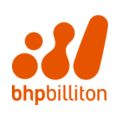
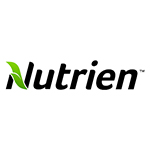

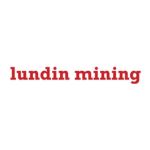
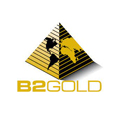
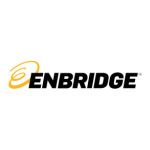
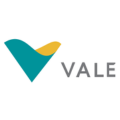
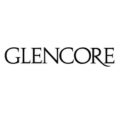
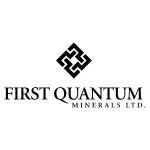
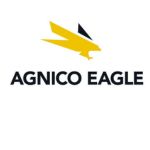

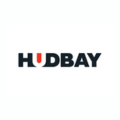
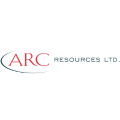
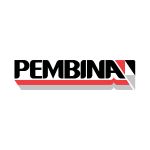
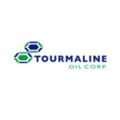
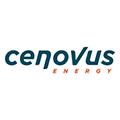
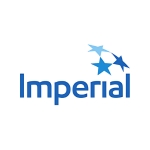

Contact Us
If you are interested in our products, services or partnering with us, please feel free to contact us by filling out this form:
or email us at sales@gaotek.com
